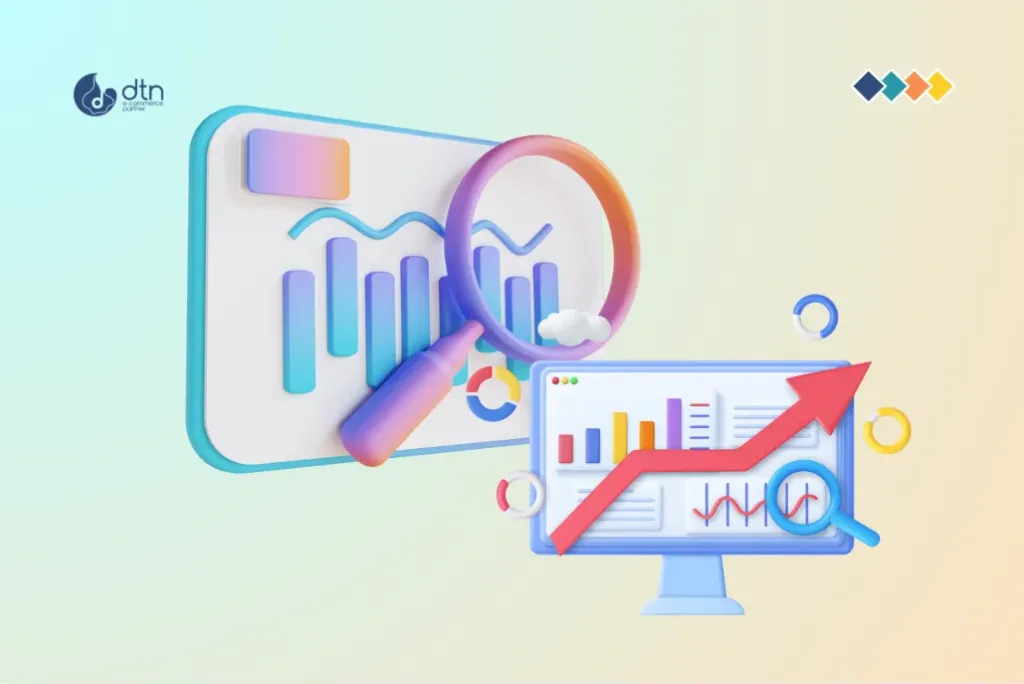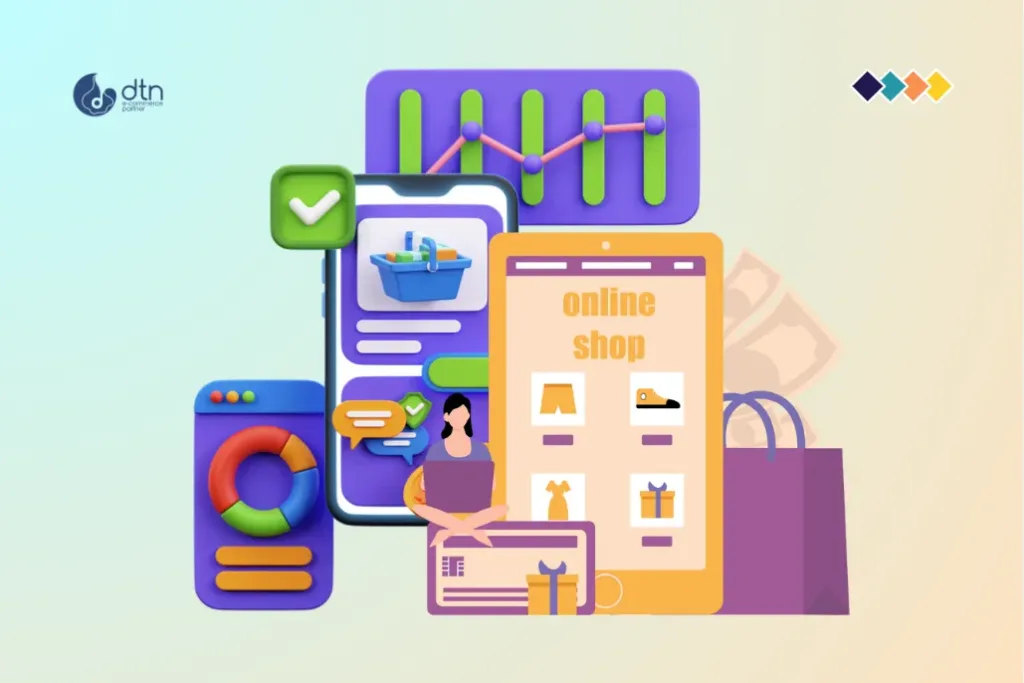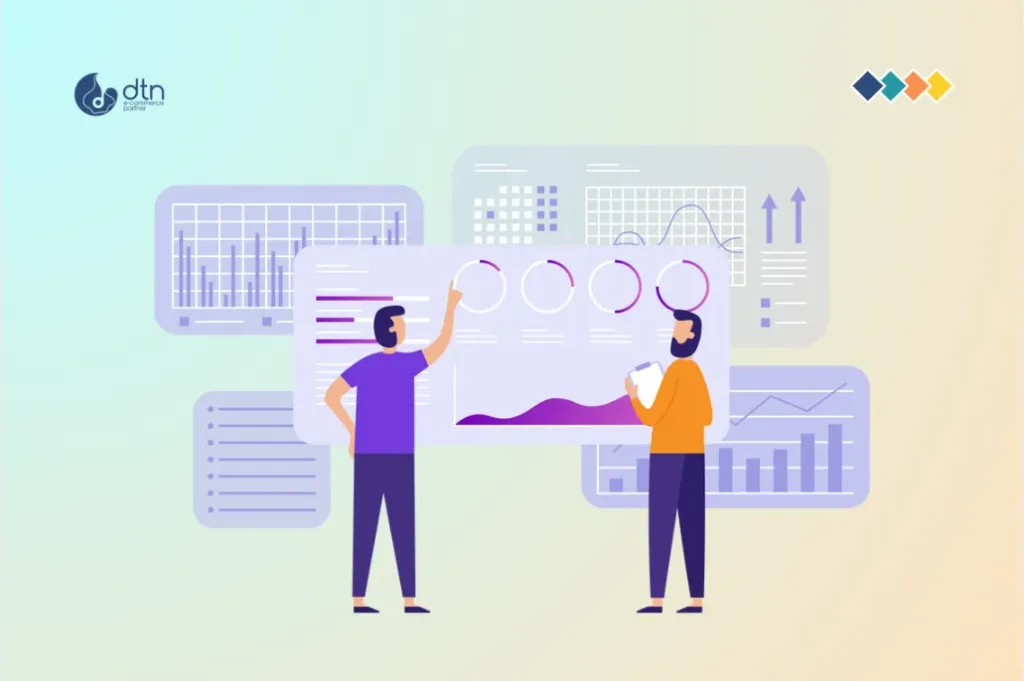Imagine knowing exactly what your customers want—before they do. Picture tweaking your prices, stock, or ads in real time to capture every sale. That’s the power of big data analytics for e-commerce. With global online sales hitting $6.8 trillion in 2025 (Statista.com, 2025), staying ahead means turning raw data into instant insights. Top retailers like Amazon and Zalando use big data to predict trends, personalise experiences, and boost conversions by up to 30% (Emarsys.com, 2025). This guide dives into how small businesses and marketers can harness big data for real-time e-commerce success—without needing a PhD in data science. From Shopify analytics to AI-driven tools, we’ll show you practical steps to outshine competitors and drive growth.
Why Big Data Analytics Is Your E-commerce Superpower
Big data isn’t just numbers—it’s a crystal ball for customer behaviour, market shifts, and operational wins. Unlike old-school reports that lag weeks behind, real-time analytics deliver insights as they happen, cutting cart abandonment (70% industry average, Baymard.com, 2024) and boosting retention by 25% (BigCommerce.com, 2025). With 88% of shoppers expecting tailored experiences (Clerk.io, 2025), big data lets you personalise at scale, optimise pricing, and spot fraud instantly. Whether you’re on Shopify or WooCommerce, the right tools can transform your store into a data-driven powerhouse. Let’s break down how to make it work.
Step 1: Tap Into Customer Insights for Personalisation
Big data lets you know your customers better than they know themselves, driving tailored experiences that convert.
- Data Sources: Website clicks, purchase history, abandoned carts, and social media likes (e.g., Instagram’s 47.5 million shoppers, SellersCommerce.com, 2025).
- Insights: Segment customers by behaviour—e.g., “frequent buyers” or “discount seekers”—to serve targeted product recommendations or emails. Personalisation lifts order values by 98% (Contentful.com, 2025).
- Action: Use Shopify’s Customer Analytics or apps like Klaviyo to tag users and automate suggestions. For example, suggest yoga mats to fitness buffs browsing leggings.
A gift shop used browsing data to recommend personalised bundles, increasing add-to-cart rates by 22%.

Step 2: Predict Demand with Precision
Stop guessing what’s hot—let big data forecast it.
- Data Sources: Past sales, seasonal patterns, social media buzz, and external trends (e.g., Google Trends for “sustainable fashion” spikes).
- Insights: Predictive models estimate demand, helping you stock smartly and avoid overbuying. 60% of retailers use this for inventory wins (DHL.com, 2025).
- Action: Integrate Shopify Flow or tools like Inventoro to analyse sales patterns. Set alerts for low stock during peak seasons like Black Friday.
A homeware brand predicted a surge in candle sales from TikTok trends, stocking up early and boosting revenue by 18%.

Step 3: Optimise Pricing and Promotions in Real Time
Dynamic pricing and targeted deals keep you competitive without slashing margins.
- Data Sources: Competitor prices (scraped via PriceSpider), inventory levels, and customer willingness to pay.
- Insights: Adjust prices based on demand—e.g., hike prices for trending items, lower for slow movers. Real-time promos drive 15% higher conversions (Emarsys.com, 2025).
- Action: Use apps like PriceMole for auto-pricing or Yotpo for flash sale triggers. Test 10% vs. free shipping offers to see what lands.
Zalando’s dynamic pricing adjusts sneaker costs based on stock, lifting margins by 12% without losing buyers.

Step 4: Catch Fraud Before It Hurts
Fraud costs e-commerce $48 billion yearly (Forrester.com, 2025). Big data stops it in its tracks.
- Data Sources: Transaction patterns, IP addresses, and unusual cart activity (e.g., rapid bulk buys).
- Insights: Spot anomalies like mismatched billing addresses or fake accounts instantly, reducing chargebacks.
- Action: Integrate Shopify Protect or Signifyd for real-time fraud detection. Set rules to flag orders over £500 from new accounts.
A tech retailer caught 90% of fraudulent orders using AI-driven checks, saving thousands monthly.
Step 5: Elevate Customer Experience with Actionable Feedback
Happy customers spend more—big data shows you how to make them smile.
- Data Sources: Reviews, live chat logs, social mentions, and post-purchase surveys.
- Insights: Identify pain points (e.g., slow checkout) and preferences (e.g., eco-packaging). 75% of shoppers value responsive support (Zendesk.com, 2025).
- Action: Use Shopify Inbox for sentiment analysis or Hotjar for heatmaps to spot UX issues. Tweak based on feedback—e.g., simplify forms to cut abandonment.
A fashion store revamped its checkout flow after data showed 30% drop-offs, boosting completions by 20%.
Step 6: Supercharge Marketing with Data-Driven Precision
Big data turns marketing from guesswork to guaranteed wins.
- Data Sources: Click-through rates, email opens, and social engagement metrics.
- Insights: Pinpoint high-ROI channels—Instagram ads vs. email—and optimise spend. Personalised campaigns see 29% higher opens (Wisernotify.com, 2024).
- Action: Use Shopify Email or Omnisend to segment audiences and send tailored promos. A/B test subject lines like “Your Deal Awaits” vs. “20% Off Today.”
A skincare brand used Instagram data to target ads at vegan shoppers, doubling click-throughs.
How to Implement Big Data Analytics Without the Overwhelm
You don’t need a massive budget to start—here’s a practical roadmap:
- Set Goals: Focus on one area, like reducing abandonment or boosting repeat buys.
- Pick Tools: Start with Shopify Analytics (free) or affordable apps like Glew (£50/month). Scale to Looker Studio for advanced dashboards.
- Build Infrastructure: Use cloud storage (e.g., Google BigQuery) for scalability. Ensure GDPR compliance with apps like Osome.
- Clean Data: Deduplicate and verify data monthly to avoid skewed insights.
- Visualise Insights: Create real-time dashboards with Klipfolio for quick decisions.
- Train Team: Upskill via Shopify Learn or Coursera’s data courses (many free).
A jewellery shop started with Shopify’s free analytics, identifying top products in weeks and cutting overstock by 15%.
Overcoming Big Data Challenges
It’s not all smooth sailing—here’s how to tackle hurdles:
- Privacy and Security: Encrypt data and use consent pop-ups. 67% of shoppers share data only with trusted brands (Contentful.com, 2025).
- Integration Complexity: Sync platforms with Zapier or Shopify Flow to streamline data flows.
- Skill Gaps: Hire freelancers from Upwork for short-term analytics help or train in-house.
- Cost Control: Stick to low-cost tools early; scale to enterprise solutions only with volume.
Practical Tips to Get Started Today
- Begin Free: Shopify’s built-in reports track sales and behaviour—start there.
- Use AI: Shopify Magic or ChatGPT plugins generate insights from customer data.
- Test Small: Run one predictive campaign (e.g., holiday stock prep) to measure ROI.
- Stay Compliant: Add a clear privacy policy to build trust and meet 2025’s stricter regs.
For shipping tips, see our shipping options guide.
Q&A: Big Data Analytics for E-commerce Trends
Why is big data analytics crucial for e-commerce in 2025?
It delivers real-time insights to personalise, predict demand, and optimise pricing, boosting sales by 30% (Emarsys.com, 2025).
How does big data improve customer personalisation?
It segments users via browsing, purchases, and social data, enabling tailored recommendations that lift order value by 98% (Contentful.com, 2025).
What role does predictive analytics play in e-commerce?
It forecasts demand using sales and trends, cutting overstock and boosting revenue (DHL.com, 2025).
How can big data analytics prevent fraud?
Real-time transaction monitoring flags suspicious activity, reducing losses (Forrester.com, 2025).
What are the challenges of big data in e-commerce?
Privacy, integration, skills, and costs—tackle with compliant tools, automation, and training (Wisernotify.com, 2024).
Conclusion: Lead E-commerce with Big Data in 2025
Big data analytics isn’t just for giants like Amazon—it’s your ticket to thriving in 2025’s $6.8 trillion e-commerce market (Statista.com, 2025). From personalising experiences to catching fraud, real-time insights drive smarter decisions and happier customers. Start small with Shopify’s tools, scale with apps, and watch your store outperform competitors.
Ready to unlock insights? Test one analytics tool today and track its impact. Contact our e-commerce experts for tailored guidance. Let’s make your data work harder.
References
- Statista.com, 2025: https://www.statista.com/outlook/emo/ecommerce/worldwide
- Baymard.com, 2024: https://baymard.com/lists/cart-abandonment-rate
- Emarsys.com, 2025: https://emarsys.com/learn/blog/ecommerce-personalization-trends-2025/
- BigCommerce.com, 2025: https://www.bigcommerce.com/articles/ecommerce-trends/
- Clerk.io, 2025: https://www.clerk.io/blog/ecommerce-product-recommendations-statistics
- SellersCommerce.com, 2025: https://www.sellerscommerce.com/blog/ecommerce-statistics-2025/
- Contentful.com, 2025: https://www.contentful.com/r/39-ecommerce-personalization-statistics/
- DHL.com, 2025: https://www.dhl.com/global-en/microsites/ec/ecommerce-insights/insights/reports/2025-ecommerce-trends-report.html
- Wisernotify.com, 2024: https://wisernotify.com/blogs/ecommerce-personalization-statistics
- Forrester.com, 2025: https://www.forrester.com/report/The-State-Of-Customer-Experience-2025/
- Zendesk.com, 2025: https://www.zendesk.com/blog/customer-service-stats/



